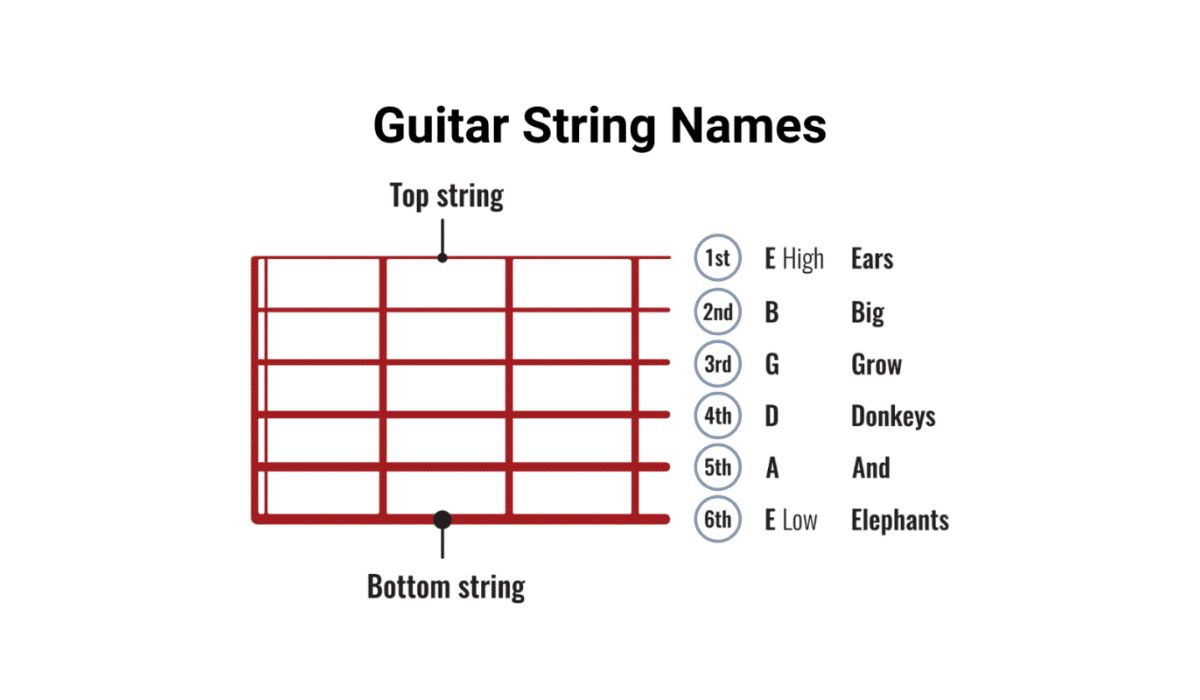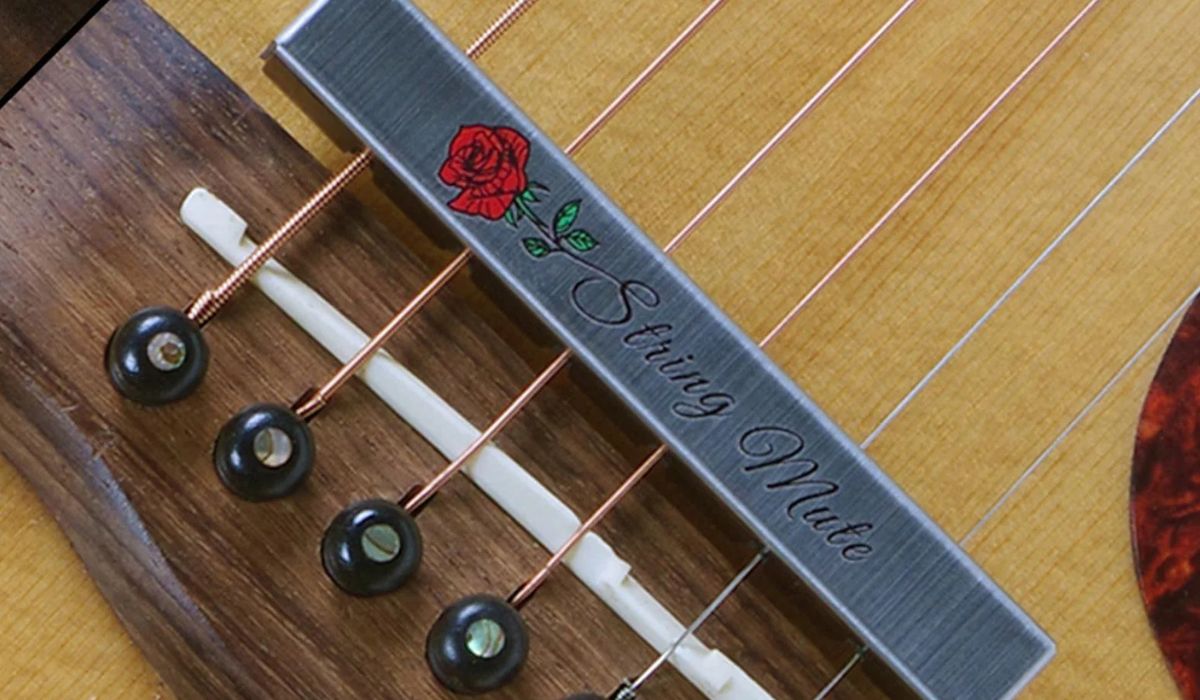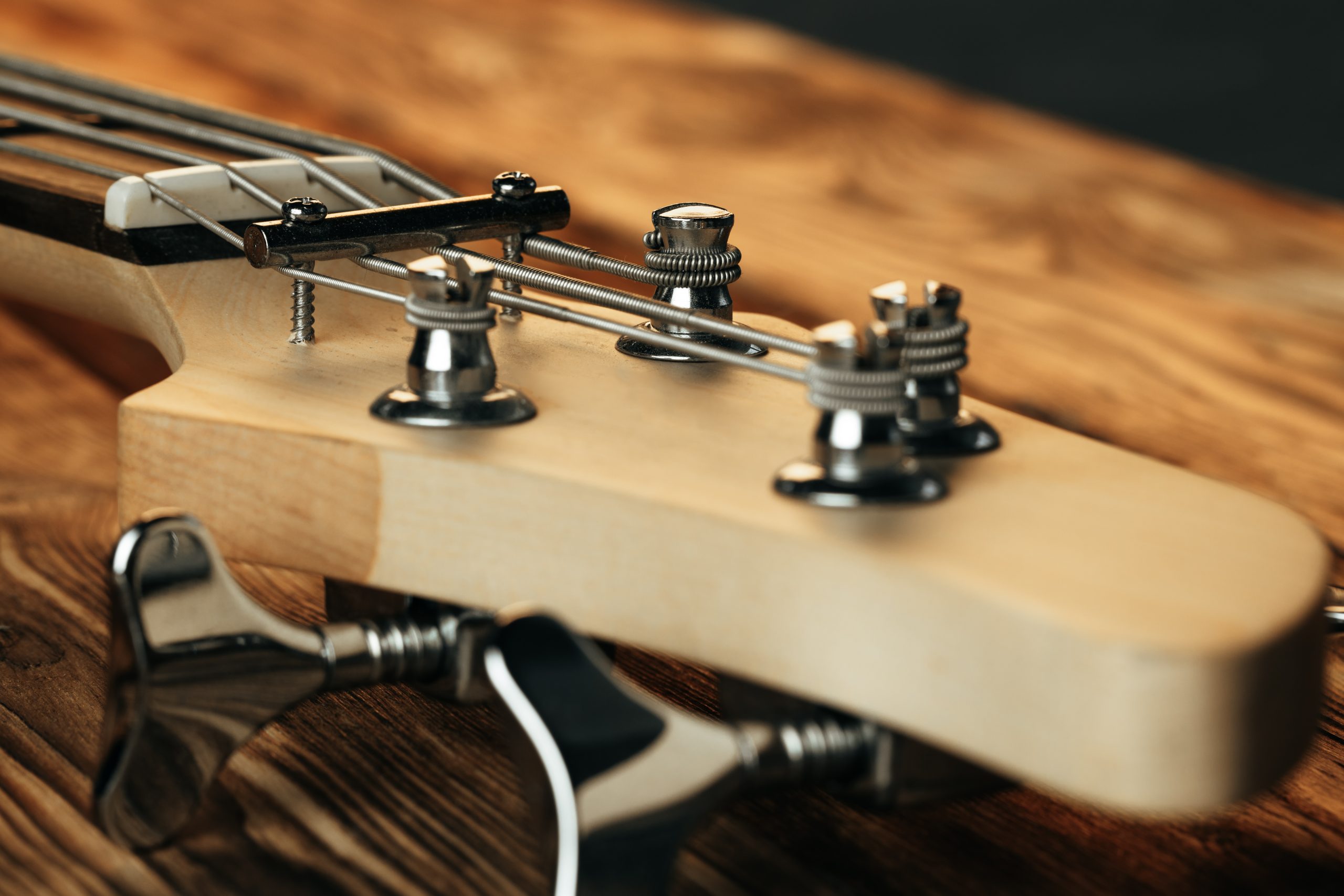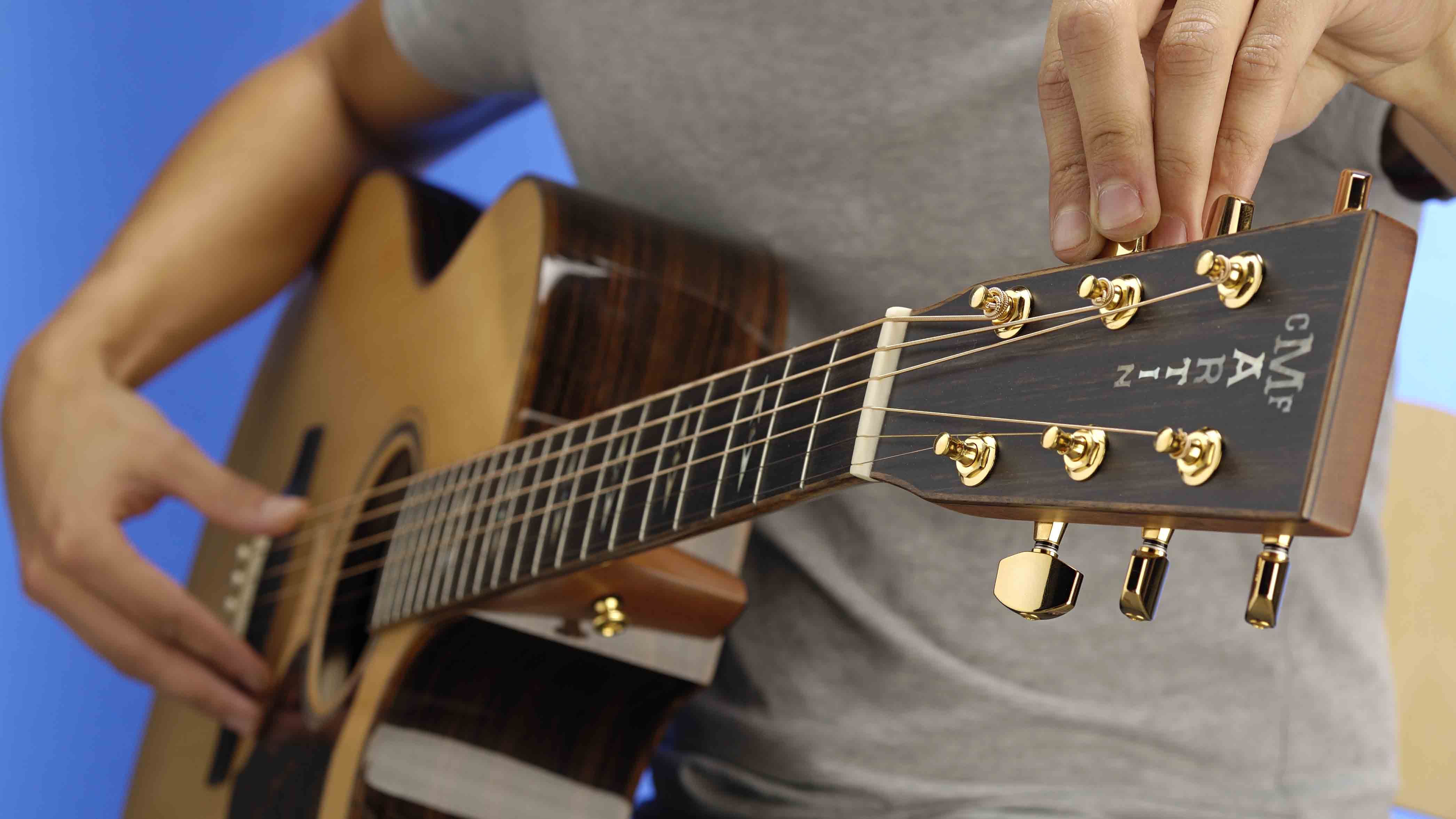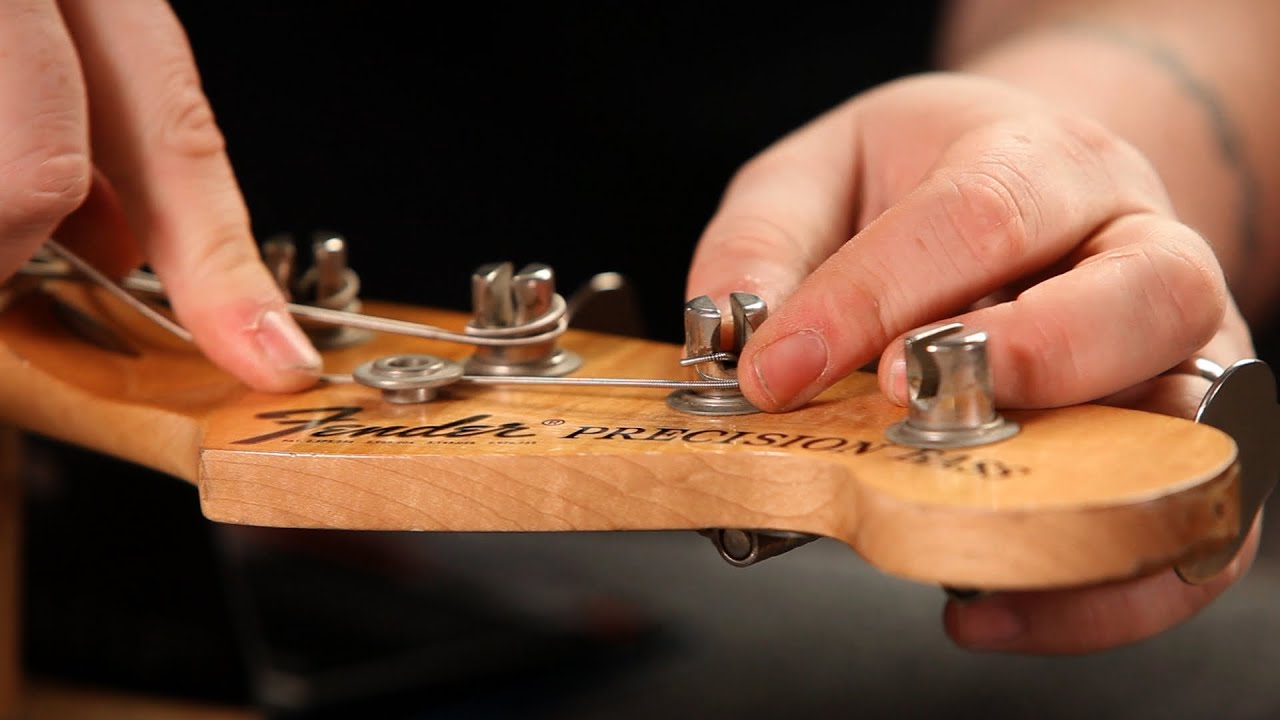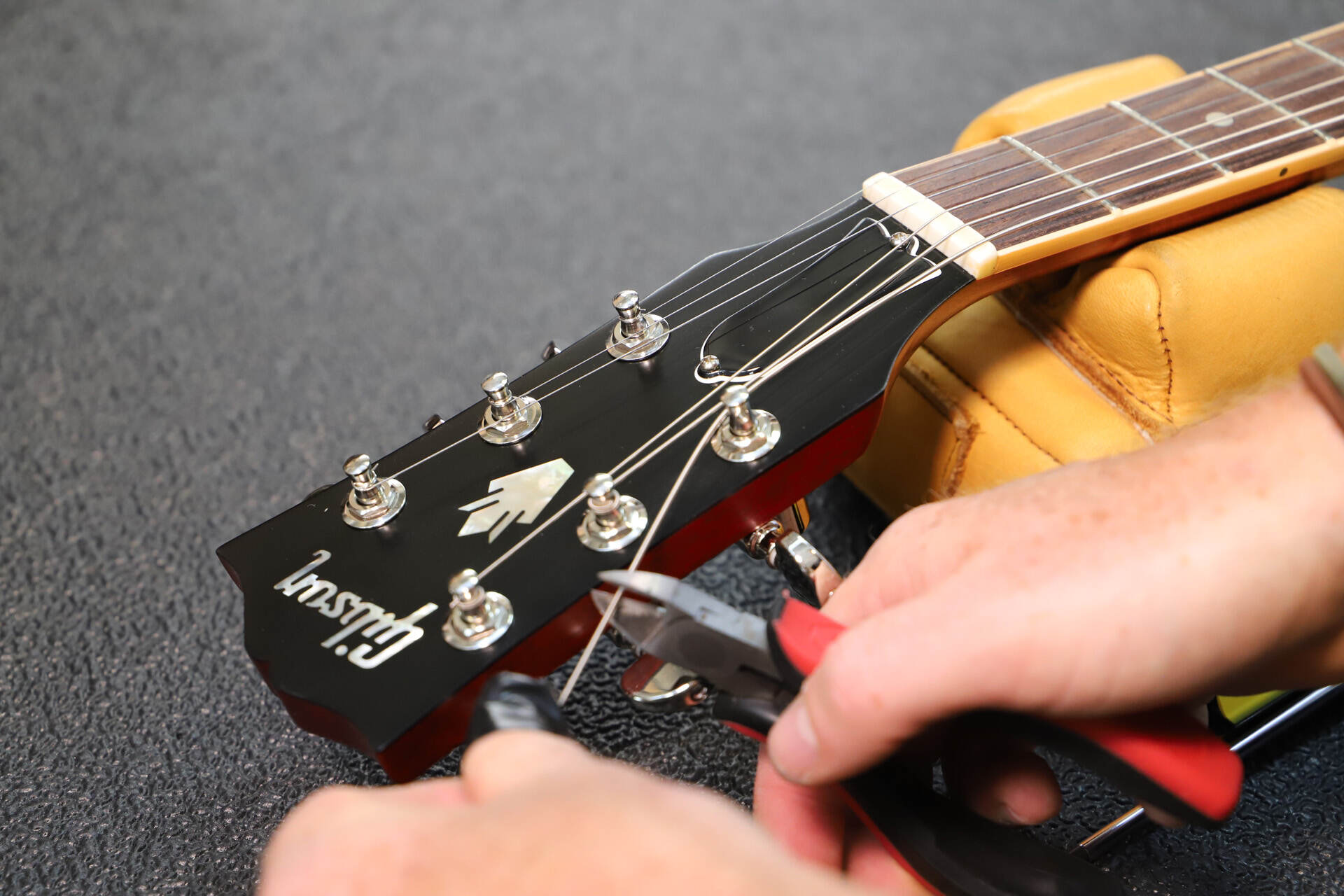Home>Instruments>Guitar>How To Tune A 6-String Guitar
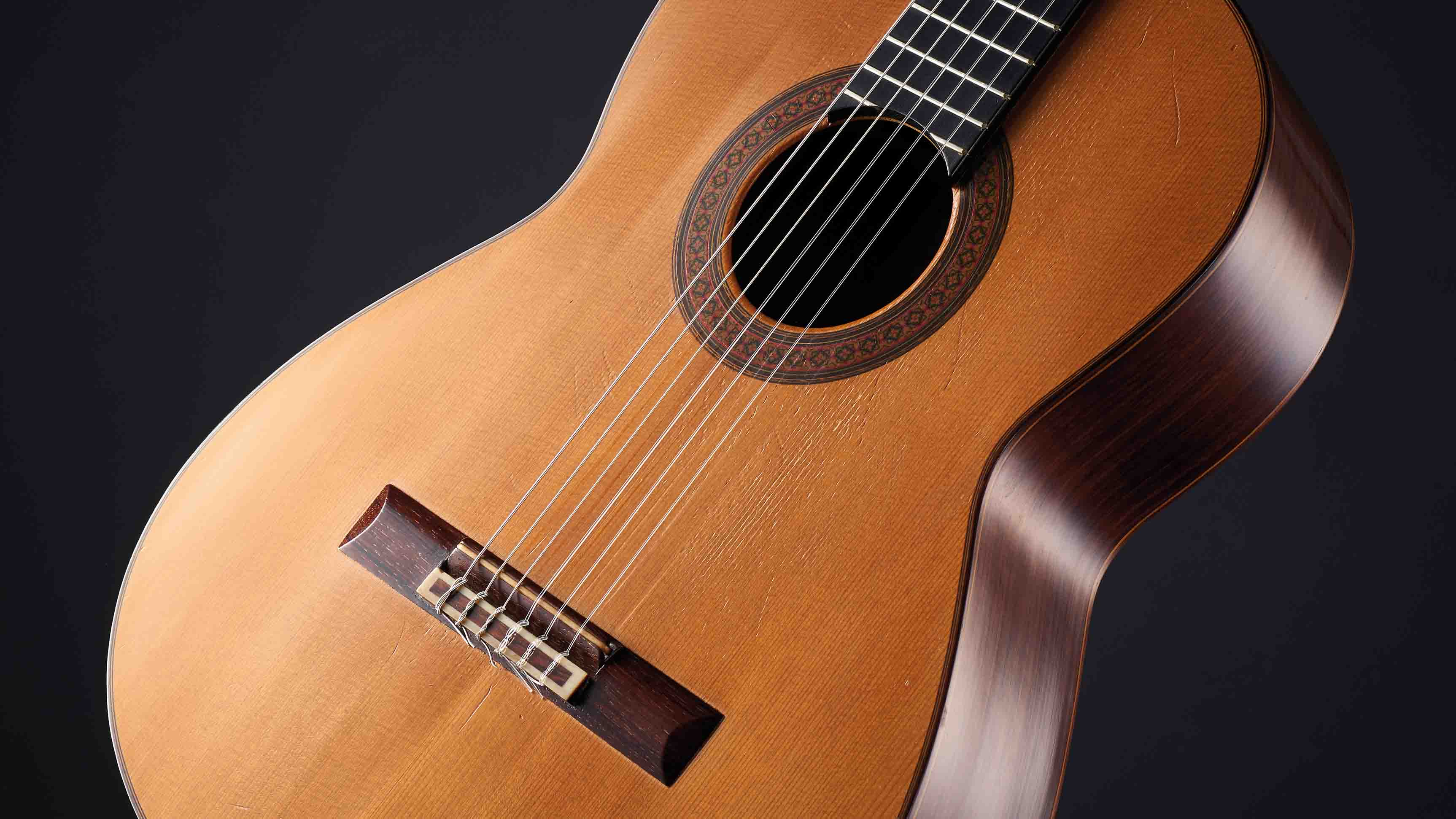

Guitar
How To Tune A 6-String Guitar
Modified: February 15, 2024
Learn how to tune a 6-string guitar with our step-by-step guide. Keep your guitar sounding great and in perfect pitch.
(Many of the links in this article redirect to a specific reviewed product. Your purchase of these products through affiliate links helps to generate commission for AudioLover.com, at no extra cost. Learn more)
Table of Contents
Introduction
Introduction
Tuning a 6-string guitar is an essential skill for any guitarist, whether you are a beginner or a seasoned player. Proper tuning ensures that your instrument produces the correct pitches, allowing you to play in harmony with other musicians and enjoy the full resonance of each chord and note. While the process may seem daunting at first, with the right guidance and practice, you can become proficient in tuning your guitar with ease.
In this comprehensive guide, we will delve into the intricacies of tuning a 6-string guitar, covering everything from understanding the instrument's anatomy to various tuning methods and maintenance tips. By the end of this article, you will have a solid grasp of the techniques and tools required to keep your guitar in perfect harmony.
Tuning your guitar not only enhances the quality of your music but also contributes to the overall playing experience. It allows you to explore different musical styles and experiment with unique sounds, ultimately broadening your musical horizons. Whether you aspire to strum soothing melodies, unleash powerful riffs, or master complex fingerstyle arrangements, the foundation of a well-tuned guitar is indispensable.
With the plethora of resources and technologies available today, mastering the art of tuning your guitar has never been more accessible. From traditional tuning methods to the convenience of electronic tuners, you have a wealth of options at your disposal. Additionally, understanding the nuances of alternate tunings can open up a world of creative possibilities, enabling you to craft your signature sound.
As we embark on this journey to unravel the secrets of guitar tuning, remember that patience and persistence are key. Embrace the process as an integral part of your musical growth, and with each strum of the strings, you will inch closer to achieving sonic perfection. So, grab your guitar, and let's dive into the fundamental principles of tuning a 6-string masterpiece.
Understanding the Guitar’s Anatomy
Understanding the Guitar’s Anatomy
Before delving into the art of tuning a 6-string guitar, it’s crucial to familiarize yourself with the instrument’s anatomy. Understanding the various components will not only aid in the tuning process but also deepen your overall connection with the guitar.
The headstock, located at the top of the guitar, houses the tuning pegs, which are used to adjust the tension of the strings. Each tuning peg corresponds to a specific string and is pivotal in achieving precise tuning. Moving along the neck, you’ll encounter the frets, which are the metal strips embedded along the fretboard. Pressing the strings against different frets alters the pitch, allowing you to play different notes and chords.
The body of the guitar contains the sound hole (in acoustic guitars) or pickups (in electric guitars), which contribute to the amplification and projection of the sound. The bridge, situated on the body’s lower end, anchors the strings and governs their height and intonation. Additionally, the saddle, a small piece located on the bridge, aids in transmitting the vibrations of the strings to the guitar’s body, influencing the overall tone.
As you familiarize yourself with the guitar’s anatomy, take note of the nut, a small strip at the top of the neck that spaces the strings and determines their alignment. The tuning machines, also known as tuners, are situated on the headstock and are instrumental in adjusting the tension of the strings to achieve the desired pitch.
By comprehending the roles and interactions of these components, you’ll develop a holistic understanding of the instrument, paving the way for a more informed and effective approach to tuning. As you embark on your tuning journey, keep in mind that every adjustment you make to the guitar’s components influences its overall sound and playability.
Now that we’ve familiarized ourselves with the guitar’s anatomy, let’s explore the next crucial aspect of achieving optimal tuning: choosing the right strings.
Choosing the Right Strings
Choosing the Right Strings
When it comes to tuning a 6-string guitar, selecting the appropriate strings is a pivotal step that significantly influences the instrument’s playability and tonal characteristics. With a myriad of options available, understanding the nuances of different string materials and gauges is essential for achieving your desired sound.
String materials play a crucial role in determining the guitar’s tone and feel. Steel strings, commonly found on acoustic and electric guitars, offer a bright and articulate sound, making them suitable for various musical genres. On the other hand, nylon strings, prevalent in classical and flamenco guitars, produce a mellow and warm tone, ideal for intricate fingerstyle playing.
Within the realm of steel strings, you’ll encounter different alloys, such as nickel-plated steel, stainless steel, and phosphor bronze, each imparting distinct sonic characteristics. Nickel-plated steel strings deliver a balanced tone with a smooth feel, while stainless steel strings offer enhanced durability and a bright sound. Phosphor bronze strings are revered for their rich, warm tones, making them a popular choice among acoustic guitarists.
Another critical factor to consider is the string gauge, which refers to the thickness of the strings. Lighter gauge strings exert less tension on the guitar’s neck and are generally easier to fret, making them suitable for beginners and players who prefer effortless string bending. Conversely, heavier gauge strings produce a robust, resonant sound and are favored by those seeking enhanced sustain and projection.
When choosing strings, it’s important to align the gauge with your playing style and preferences. Acoustic guitarists may opt for light gauge strings for a more delicate touch, while electric guitarists exploring drop tunings or aggressive playing techniques might lean towards heavier gauges for added stability and power.
Furthermore, the frequency of string changes should be considered, as different materials and coatings impact the strings’ longevity. Coated strings, designed to resist corrosion and prolong their lifespan, are ideal for players seeking extended durability without compromising tone quality.
By delving into the realm of string materials, gauges, and coatings, you can tailor your guitar’s tonal palette to suit your musical endeavors. With the right strings in place, you’ll lay a solid foundation for achieving impeccable tuning and unlocking the full sonic potential of your 6-string guitar.
Tuning Methods
Tuning Methods
As you venture into the realm of tuning your 6-string guitar, you’ll encounter various methods to achieve optimal pitch alignment. Whether you’re aiming for standard tuning or exploring alternative tunings to craft unique sonic landscapes, understanding the diverse tuning approaches is essential for honing your musical prowess.
Let’s explore the primary tuning methods that form the bedrock of guitar tuning:
Standard Tuning
Standard tuning, prevalent in most popular music genres, configures the guitar strings to produce the pitches EADGBE, from the lowest string to the highest. This fundamental tuning serves as a universal reference point, allowing for seamless chord transitions and melodic exploration across the fretboard.
Alternate Tunings
Embracing alternate tunings opens a gateway to a myriad of tonal possibilities, enabling you to evoke distinctive moods and textures. From the ethereal resonance of Open D tuning to the evocative allure of Drop D tuning, each alternate tuning imbues the guitar with a unique voice, fostering creativity and innovation.
Exploring alternate tunings can breathe new life into familiar chord progressions and inspire fresh musical ideas, making it a captivating avenue for sonic experimentation and artistic expression.
Using Electronic Tuners
Electronic tuners have revolutionized the tuning process, offering precision and convenience for guitarists of all levels. These devices detect the pitch of each string, providing visual and auditory feedback to guide you towards accurate tuning. Whether it’s a clip-on tuner that attaches to the headstock or a pedal tuner integrated into your effects setup, electronic tuners streamline the tuning process, ensuring that your guitar resonates in perfect harmony.
Tuning by Ear
Developing the ability to tune your guitar by ear is a valuable skill that fosters a deeper connection with your instrument and sharpens your musical intuition. By honing your ear for pitch and training your sense of relative tuning, you can fine-tune your guitar without relying on external aids. This method not only enhances your musical acumen but also serves as a reliable fallback when electronic tuners are unavailable.
Each tuning method offers its unique advantages, and mastering a combination of approaches equips you with a versatile toolkit for maintaining your guitar’s pitch precision in diverse playing scenarios.
Now that we’ve explored the fundamental tuning methods, let’s delve into the intricacies of each approach, equipping you with the knowledge to elevate your tuning proficiency.
Standard Tuning
Standard tuning is the foundational configuration for the 6-string guitar, establishing a consistent pitch arrangement that facilitates chord voicings, scale patterns, and melodic exploration. In standard tuning, the strings are tuned to produce the pitches EADGBE, from the lowest string to the highest.
Understanding the standard tuning layout is paramount for navigating the fretboard and executing familiar chord shapes and scales. The EADGBE sequence provides a harmonious balance across the strings, enabling seamless transitions between chords and fostering melodic cohesion.
When tuning your guitar to standard tuning, it’s essential to ensure that each string resonates at the designated pitch. Utilizing a reference pitch from a piano, tuning fork, or electronic tuner serves as a reliable starting point for aligning the strings to their respective notes.
Begin by tuning the low E string to E2, followed by the A string to A2, the D string to D3, the G string to G3, the B string to B3, and finally, the high E string to E4. As you adjust each string, listen for the characteristic sound of the target pitch, striving for clarity and resonance.
Standard tuning lays the groundwork for a vast repertoire of songs, making it an indispensable skill for guitarists across genres. Whether you’re strumming timeless classics, delving into intricate fingerstyle arrangements, or unleashing scintillating solos, the familiarity with standard tuning empowers you to navigate diverse musical landscapes with confidence and fluency.
Moreover, the ubiquity of standard tuning facilitates collaboration with other musicians, as it provides a common reference point for ensemble playing and musical cohesion. By honing your proficiency in standard tuning, you position yourself to seamlessly integrate into musical ensembles, jam sessions, and collaborative performances, enriching your musical journey.
Embracing the versatility and familiarity of standard tuning sets the stage for musical exploration and expressive innovation, empowering you to harness the full potential of your 6-string guitar. As you cultivate your mastery of standard tuning, you pave the way for a rich and rewarding musical odyssey, steeped in harmonic resonance and melodic eloquence.
Alternate Tunings
Embracing alternate tunings offers a captivating avenue for expanding the sonic horizons of the 6-string guitar, unlocking a tapestry of evocative sounds and innovative possibilities. Unlike standard tuning, alternate tunings involve adjusting the pitch of one or more strings to deviate from the conventional EADGBE arrangement, thereby imbuing the instrument with distinct tonal qualities and expressive nuances.
One popular alternate tuning is Open D, which configures the strings to produce the pitches DADF#AD, from the lowest string to the highest. This rich, resonant tuning is favored for its lush, open chord voicings and its suitability for slide guitar playing, making it a staple in the repertoire of blues and folk musicians.
Drop D tuning, another prevalent alternate tuning, involves lowering the low E string to D, resulting in the pitches DADGBE. This adjustment engenders a deep, robust resonance and grants access to powerful low-end riffs and chords, making it a favorite among rock and metal guitarists seeking heightened tonal depth and versatility.
Furthermore, the ethereal allure of Open G tuning, which configures the strings to produce the pitches DGDGBD, evokes a haunting, open-sky ambiance, fostering evocative fingerstyle arrangements and evocative slide guitar explorations. This tuning has left an indelible mark on the realms of blues, folk, and roots music, captivating listeners with its immersive tonal palette.
Alternate tunings transcend conventional tonal boundaries, offering a kaleidoscope of evocative textures and harmonic landscapes. From the enigmatic allure of DADGAD tuning, cherished for its Celtic and folk resonances, to the mesmerizing allure of DADFAD tuning, embraced by fingerstyle virtuosos, each alternate tuning beckons with its unique sonic tapestry, inviting guitarists to embark on a sonic odyssey.
Exploring alternate tunings not only expands your sonic palette but also nurtures a deeper understanding of the guitar’s harmonic potential, fostering creative expression and compositional innovation. By immersing yourself in the realm of alternate tunings, you embark on a transformative journey, where each string adjustment unveils new melodic pathways and resonant possibilities.
As you navigate the realm of alternate tunings, you’ll discover a boundless realm of sonic exploration, where the familiar fretboard transforms into a canvas for expressive innovation and emotive resonance. Embrace the allure of alternate tunings, and let your guitar resonate with the evocative whispers of uncharted harmonies and untold musical narratives.
Using Electronic Tuners
Electronic tuners stand as indispensable tools in the guitarist’s arsenal, offering precision, convenience, and versatility in the pursuit of impeccable tuning. These devices detect the pitch of each string, providing visual and auditory feedback to guide you towards accurate tuning, ensuring that your guitar resonates in perfect harmony.
One prevalent type of electronic tuner is the clip-on tuner, which attaches directly to the headstock of the guitar, allowing for discreet and hands-free tuning. The compact, portable nature of clip-on tuners makes them a convenient companion for practice sessions, performances, and studio recordings, ensuring that your instrument remains in optimal pitch alignment at all times.
Pedal tuners, integrated into the guitarist’s effects pedal setup, offer seamless tuning capabilities within the pedalboard rig, enabling swift adjustments during live performances and rehearsals. The pedal format provides tactile control, allowing for swift engagement and disengagement of the tuner as needed, ensuring minimal disruption to the musical flow.
Additionally, modern electronic tuners often feature advanced functionalities, such as chromatic tuning modes that accommodate alternate tunings and precise pitch detection across the entire musical spectrum. Some tuners also incorporate strobe tuning displays, which offer unparalleled accuracy by visualizing the subtle fluctuations in pitch with precision, catering to the discerning needs of professional musicians and recording artists.
Electronic tuners not only streamline the tuning process but also cultivate a keen sense of pitch awareness and intonation refinement, empowering guitarists to develop a discerning ear for harmonic precision. By consistently utilizing electronic tuners, you hone your capacity for pitch recognition and cultivate a steadfast commitment to sonic excellence.
Whether you’re fine-tuning the resonance of an acoustic ballad, unleashing scorching riffs in a high-octane rock anthem, or delving into the emotive intricacies of jazz improvisation, electronic tuners serve as steadfast allies, ensuring that your guitar resonates with unwavering clarity and tonal purity.
Embrace the power of electronic tuners as your trusted companions in the quest for sonic perfection, and let the harmonious resonance of each precisely tuned string ignite the musical landscapes of your creative endeavors with resplendent clarity and melodic eloquence.
Tuning by Ear
Tuning your guitar by ear is a time-honored tradition that fosters a deep connection with your instrument and cultivates a keen sense of pitch perception. This method not only refines your musical intuition but also serves as a reliable fallback when electronic tuners are unavailable, empowering you to maintain pitch accuracy in diverse playing scenarios.
Developing proficiency in tuning by ear begins with establishing a reliable reference pitch, often derived from a piano, tuning fork, or another tuned instrument. By familiarizing yourself with the characteristic sound of each string’s target pitch, you hone your ability to discern subtle variations in pitch and ensure precise tuning across the fretboard.
One approach to tuning by ear involves utilizing the concept of relative tuning, where you compare the pitch of one string to another to achieve harmonious alignment. For instance, by tuning the A string to the fifth fret of the low E string, you can ascertain if the A string resonates at the correct pitch. Similarly, aligning the D string to the fifth fret of the A string, the G string to the fifth fret of the D string, and so forth, enables you to establish accurate pitch relationships between the strings.
Furthermore, developing a discerning ear for pitch entails attentive listening and keen observation of the subtle variations in string tension and resonance. By fine-tuning each string with precision and sensitivity, you cultivate a steadfast commitment to tonal excellence, enriching your musical journey with unwavering harmonic clarity.
Mastering the art of tuning by ear equips you with a profound understanding of your instrument’s sonic intricacies, fostering a deeper appreciation for intonation refinement and tonal expression. This method transcends the realm of mere pitch alignment, serving as a gateway to a heightened awareness of the guitar’s harmonic resonance and melodic potential.
As you embark on the enriching journey of tuning by ear, you’ll discover a profound sense of empowerment and musical autonomy, where each adjustment of the tuning peg becomes a deliberate act of sonic refinement and harmonic precision. Embrace the art of tuning by ear as a testament to your unwavering dedication to the pursuit of tonal excellence, and let the resonant clarity of each precisely tuned string illuminate the musical landscapes of your creative endeavors with resplendent harmony and melodic eloquence.
Maintaining Tuning Stability
Ensuring consistent tuning stability is essential for every guitarist, as it directly impacts the playability and sonic integrity of the instrument. Several factors can influence tuning stability, and understanding how to mitigate potential issues is crucial for preserving the harmonious resonance of your 6-string guitar.
String Stretching and Settling
When installing new strings or performing significant tuning adjustments, it’s imperative to allow the strings to stretch and settle into their optimal tension. Gently stretching each string by pulling it away from the fretboard and re-tuning it multiple times helps expedite the settling process, reducing the likelihood of abrupt pitch fluctuations during play.
Nut and Bridge Lubrication
Applying a small amount of lubricant, such as graphite or specialized nut lubricants, to the nut slots and bridge saddles reduces friction and binding, facilitating smoother string movement. This simple yet effective measure minimizes tuning instability caused by string snagging or sticking at contact points, ensuring seamless pitch retention.
Environmental Considerations
Fluctuations in temperature and humidity can impact the neck’s wood and the strings, potentially leading to tuning instability. Storing your guitar in a stable environment with moderate humidity levels and avoiding sudden temperature changes mitigates the risk of neck warping and string expansion or contraction, promoting consistent tuning performance.
String Winding and Tension Distribution
When restringing your guitar, ensuring that the strings are wound neatly around the tuning pegs promotes uniform tension distribution, minimizing the likelihood of slippage and tuning irregularities. Additionally, maintaining an appropriate amount of string wraps around the tuning posts enhances tuning stability and reduces the risk of string slippage.
Regular Maintenance and Inspections
Periodic inspections of the tuning machines, nut, bridge, and neck integrity are essential for preemptively identifying and addressing potential sources of tuning instability. Keeping the guitar well-maintained, including cleaning and lubricating the tuning machines, ensures that mechanical issues are promptly remedied, safeguarding consistent tuning performance.
By implementing these measures and adopting a proactive approach to guitar maintenance, you fortify the foundation for reliable tuning stability, empowering you to unleash the full sonic potential of your instrument with unwavering pitch accuracy and harmonic resonance.
Conclusion
Embarking on the journey of tuning a 6-string guitar unveils a rich tapestry of sonic exploration, technical finesse, and creative expression. From the foundational principles of standard tuning to the evocative allure of alternate tunings, each facet of the tuning process enriches the guitarist’s musical odyssey, fostering a profound connection with the instrument and the boundless realms of harmonic resonance.
As you delve into the nuances of guitar tuning, remember that patience, persistence, and attentive listening are your steadfast companions. Embrace the process as an integral part of your musical growth, where each adjustment of the tuning peg becomes a deliberate act of sonic refinement and harmonic precision.
Whether you rely on the precision of electronic tuners or cultivate the art of tuning by ear, each method shapes your musical acumen and empowers you to maintain unwavering pitch accuracy, ensuring that your guitar resonates with resplendent clarity and melodic eloquence.
Furthermore, the pursuit of tuning stability stands as a testament to your unwavering dedication to the pursuit of tonal excellence, where meticulous maintenance and proactive measures fortify the foundation for reliable pitch retention and harmonious resonance.
As you continue your musical journey, let the harmonious resonance of each precisely tuned string ignite the sonic landscapes of your creative endeavors with unwavering clarity, melodic elegance, and the timeless allure of the 6-string guitar.
Embrace the art of guitar tuning as a transformative voyage, where each adjustment becomes a testament to your unwavering commitment to the pursuit of sonic perfection and the boundless realms of harmonic resonance.

